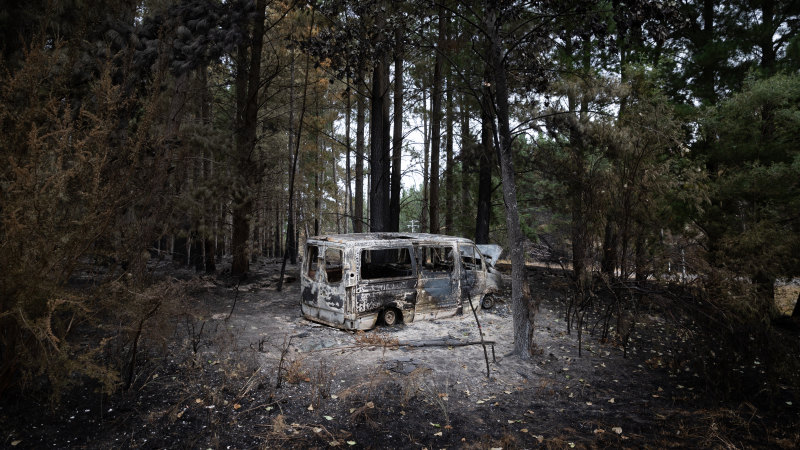
Battling the out-of-control Bayindeen fire this week have been more than 500 firefighters and forestry fire management crew members – who came from as far afield as East Gippsland – as well as 110 Rural Fire Service firefighters from NSW.
When the fire first broke out last Thursday near Bayindeen, east of Ararat, the west of the state was experiencing a “pretty typical” day of summer fire danger, State Control Centre spokesman Luke Heagerty told The Age.
“We had the strong northerly winds that pushed the fire in a south, to south-easterly direction, so we had this long cigar-shaped fire area, and then we had the wind change come through that evening.”
Heagerty, who has a 17-year career with the Country Fire Authority and is the authority’s manager of incident management systems, said these wind changes could transform a fairly predictable fire into an enormous fire front.
The way fire crews tackle wind changes, and the unpredictable effects they can have on bushfires, has evolved over the past 30 years.
“Typically in the past, that would have been where we would have seen the most loss of property and injuries to crews because the wind changes is the real kicker that pushes the fire in a different direction,” Heagerty said.
Once the wind change kicked in on Thursday, aerial crews were dispatched to attack the large new flank of the fire with water and flame retardant.
“On the Thursday afternoon we focused a lot on containing as much of that edge of the fire as we could, using quite a lot of aircraft … whilst the fire wasn’t contained, we were certainly able to reduce that spread of the fire on the Thursday night when the wind did change.”
Meanwhile, ground crews spent days clearing ground cover between the active fires and unburnt bush and forest, building 160 kilometres of containment lines around the fires.
Loading
Those lines were put to their greatest test late on Wednesday, when temperatures soared and gusty winds of up to 80km/h hit the west of the state. To the vast relief of everyone, the lines held firm.
From above, aerial crews armed with thermal imaging cameras monitored the fires, directing ground resources to spot fires and smoke.
“We saw a couple of minor areas where some smoke was showing up,” Heagerty said.
“That was mainly tree stumps smouldering that were well within the burnt area … [the aircraft] are flying over the fire area and just giving you a view of the fire ground and seeing where those pockets of heat might have been that you wouldn’t see with the naked eye.”
Heagerty nominated two key changes to the way authorities and communities fight bushfires: improved awareness of wind and fire behaviour, and improved aerial technology, which reduces the number of firefighters working in dangerous conditions on the ground. But just as important is the third element: Victoria’s relatively new bushfire warning systems.
“That is part of winning the fight overall, that we have the community engaged as part of the [bushfire] response,” Heagerty said. “They see the warnings, they respond to the warnings, and they make decisions that help them be at the best place as that fire’s developing.”
Premier Jacinta Allan, who visited fire crews in Ballarat on Thursday, was ebullient as she declared the Bayindeen fire contained, thanks to the tireless work of fire and forestry crews, volunteers and residents.
“I do want to thank all Victorians who have heeded the advice,” she said.
“The lower numbers of properties that we’ve seen damaged, and the fact that there has not been – in the case of the fires – a loss of life, I think speaks directly to the fact that Victorians have heeded the warnings … on days of extreme and catastrophic fire, when there are warnings to leave to watch and act, to then leave and leave immediately, those warnings have also been followed.”
